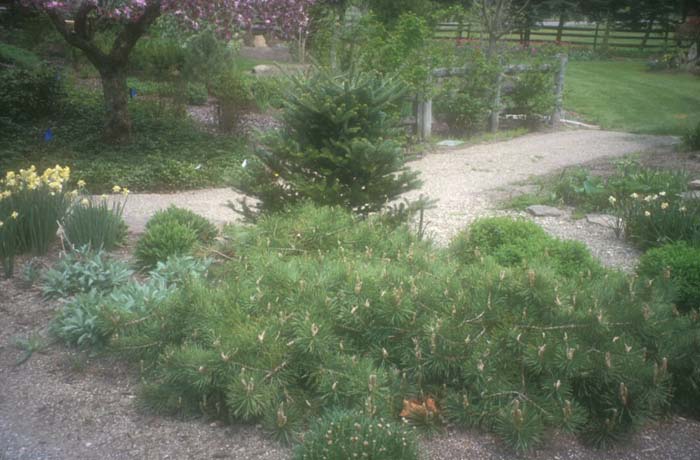| Botanical Name: Pinus sylvestris 'Hillside Creeper' | Add |
| Common Name: Hillside Creeper Scotch Pine |

-
Anatomy
-
Culture
-
Design
Plant Type
Tree, Conifer
Height Range
12-25', 25-40', 60-100'
Flower Color
n/a
Flower Season
n/a
Leaf Color
Blue Green, Grey Green
Bark Color
Red
Fruit Color
n/a
Fruit Season
n/a
Sun
Full
Water
Very Low, Low
Growth Rate
Moderate
Soil Type
Sandy, Clay, Loam, Rocky, Unparticular
Soil Condition
Average, Moist
Soil pH
Acid, Neutral
Adverse Factors
n/a
Design Styles
English Cottage, Japanese, Meadow, Mediterranean, Ranch, Seascape, Spanish, Woodland
Accenting Features
Specimen, Unusual Foliage, Unusual Shape
Seasonal Interest
n/a
Location Uses
Background, Park, Roadside, With Rocks
Special Uses
Screen, Wind Break
Attracts Wildlife
n/a
Information by: Bonnie Rose
Photographer: Linda Engstrom
Photographer: Linda Engstrom
-
Description
-
Notes
Some features of the sylvestris include its stout, twisted needles and egg-shaped cones. Its trunk is often crocked, and the bark, which peels in irregular plates,is a purple-grey color which changes to orange and flanking toward the top. Positive growth will result from planting in acidic, well-drained soil. It is best to destroy severly beetle-ridden trees.
While it is a very hardy tree, it grows poorly in desert areas. In cold winters, it often turns a red-brown color (from which it will recover). Although it is wind-resistant, the pine is intolerant of much shade.